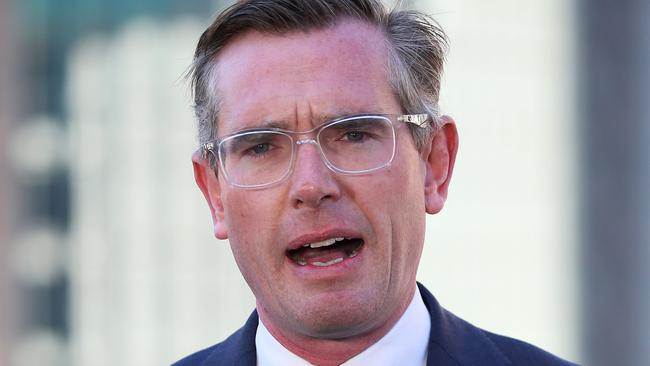Victorian budget 2021: land tax grab spills into NSW
The Victorian government’s land tax hike will perversely hit the NSW budget’s bottom line, potentially costing the state $6 in GST revenue for every $100 raised under the plan.

The Victorian government’s land tax hike will perversely hit the NSW budget’s bottom line, potentially costing the state $6 in GST revenue for every $100 raised under the plan.
The Commonwealth Grants Commission, which oversees the division of GST money, confirmed Victoria would also likely lose $4.50 for every additional $100 of land tax.
The Victorian budget on Thursday included a land tax receipt in a bid to raise $2.4bn over four years, a move that has angered the property industry.
NSW Treasurer Dominic Perrottet said he was looking closely at the impact of interstate tax changes, which could affect future GST revenues.
“The GST has a lot in common with KFC,” Mr Perrottet said.
“It is a mysterious mix of 11 secret herbs and spices that is a closely guarded recipe.
“The fact one state could potentially be worse off based on a policy decision made by another state indicates the current system is far from perfect.
“I have long advocated for a fairer system which rewards states such as NSW that embark on productivity reform or a system which allocates GST more evenly on a per capita basis.”
Any change would only take effect from the 2023-24 financial year and, under CGC rules, would only be felt in full after July 2025.
The Victorian plan will lift stamp duty on real estate valued at $2m and above from 5.5 per cent to 6.6 per cent — adding $20,000 to properties at that end of the range and impose windfall gains tax on property developers of up to 50 per cent.
Commercial and investment properties valued between $1.8m and $3m would face a land tax rise of 1.3 per cent to 1.55 per cent, while those above that threshold would have their levies increased from 2.25 per cent to 2.55 per cent.
The hike has been met with anger from the property industry, with Property Council chief executive Ken Morrison on Wednesday describing the change as “a very retrograde step”.
Victorian Treasurer Tim Pallas handed down his budget on Thursday and said the new tax policies were choices taken to “reflect our values as a government”.
“Our values are that we need to grow jobs and need to care for those in the community who need support,” he said.
The potential hit to the Victorian and NSW GST takes is because the CGC assesses the states’ ability to raise revenue from property taxes by calculating the amount of money each could raise if it were to apply the average tax rate of all states.
The increased land tax will raise the assessed property tax capacity of NSW and Victoria.
Miranda Stewart, Melbourne Law School’s tax group director, said the GST distribution formula recognised tax capacity based on the size of a state or territory’s population and economy.
In simple terms, Professor Stewart said that, “if they have the ability to raise more revenue, it goes into the formula and they get less other revenue distribution”.
“The numbers just feed into the formula, and the formula doesn’t distinguish between tax reform — or an improvement in the tax system — or just an increase in an inefficient tax,” she said. “Whether a state raises revenue via a bad tax policy or a good tax policy, the formula doesn’t discriminate, the major policy criticism of the GST formula is that it doesn’t encourage productivity enhancing tax reform.”




To join the conversation, please log in. Don't have an account? Register
Join the conversation, you are commenting as Logout